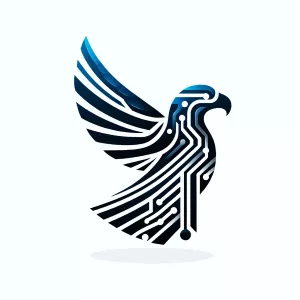- in Middle East
- in Middle East
- in Middle East
- in Middle East
- with readers working within the Advertising & Public Relations, Aerospace & Defence and Oil & Gas industries
- within Tax, Media, Telecoms, IT, Entertainment and Finance and Banking topic(s)
KEY TAKEAWAYS
- VASPs must adhere to evolving global regulations under SCA, MiCA and FATF guidelines.
- Obtaining the necessary licenses is crucial for legal operation and market access.
- Implementing KYC, transaction monitoring, and reporting mechanisms is essential.
- Clear internal controls and board oversight ensure regulatory compliance.
- Regular risk assessments help identify and mitigate operational, financial, and reputational risks.
- Proactive communication with regulators fosters smoother compliance processes.
INTRODUCTION
The rapid evolution of the virtual asset industry has introduced both unprecedented opportunities and significant regulatory challenges. As cryptocurrencies and other digital assets gain mainstream traction, virtual asset service providers ("VASPs") must navigate complex legal landscapes and establish robust compliance and risk management frameworks. Ensuring adherence to regulatory requirements not only mitigates legal exposure but also fosters trust with clients, investors, and regulatory bodies.
UNDERSTANDING THE REGULATORY LANDSCAPE
Virtual asset entities operate in a dynamic environment marked by rapidly evolving regulations. Jurisdictions worldwide are adopting diverse approaches to regulating digital assets, from comprehensive frameworks to outright bans. For instance, the European Union's Markets in Crypto-Assets – MiCA regulation aims to standardise crypto regulations across member states. At the same time, the Financial Action Task Force (FATF) provides international guidelines on anti-money laundering ("AML") and combating the financing of terrorism ("CFT").
Entities must stay abreast of these regulatory developments and understand the specific requirements in each jurisdiction. This includes licensing obligations, AML/CFT compliance, data protection laws, and consumer protection measures. Non-compliance can result in severe penalties, reputational damage, and even business closure.
COMPLIANCE AND RISK MANAGEMENT MEASURES
Licensing and Registration Requirements
Many jurisdictions now mandate that VASPs obtain licences or register with regulators before commencing operations. Licensing requirements vary based on the services offered, such as exchange platforms, wallet providers, or custodial services. For example, Singapore's Payment Services Act requires digital payment token services to be licensed, while the UAE's Virtual Asset Regulatory Authority oversees licensing in Dubai.
Obtaining the necessary licenses involves rigorous due diligence, including background checks on key personnel, demonstrating robust internal controls, and providing detailed business plans. Failure to comply with licensing requirements can lead to significant legal repercussions and hinder the ability to operate in key markets.
AML/CFT
AML and CFT compliance are critical components of risk management for virtual asset entities. The FATF's "Travel Rule" requires VASPs to collect and share information about the originators and beneficiaries of virtual asset transfers. Implementing effective AML/CFT measures involves several key steps.
Customer Due Diligence (CDD) is the first step, where entities must verify the identity of their clients through Know Your Customer (KYC) procedures, including collecting identification documents and conducting background checks. Transaction monitoring follows, which involves continuous monitoring of transactions to identify suspicious activities, such as unusual transaction patterns or high-value transfers that deviate from a customer's typical behaviour. Suspicious Activity Reporting (SAR) is another crucial step, where entities are required to report any suspicious transactions to relevant authorities promptly. Finally, ongoing staff training on AML/CFT regulations and internal procedures ensures that all employees know their compliance responsibilities.
Data Protection and Cybersecurity
Given the digital nature of virtual assets, data protection and cybersecurity are paramount. VASPs handle sensitive customer information and are prime targets for cyberattacks. Compliance with applicable data protection regulations is crucial to their sustenance.
Key cybersecurity measures include encryption to protect data through advanced methods, preventing unauthorised access. Multi-Factor Authentication (MFA) adds an additional layer of security for user accounts. Regular security audits help identify vulnerabilities and implement corrective measures, while a comprehensive incident response plan ensures a swift and effective reaction to data breaches or cyberattacks.
Internal Controls and Corporate Governance
Strong governance structures, internal controls, and corporate governance frameworks are fundamental to effective compliance and risk management. Clear policies and procedures must be established, providing consistent decision-making and risk management framework. Appointing a dedicated compliance officer ensures a central point of contact for regulatory matters and compliance obligations are met. Regular Audits and Reviews, both internal and external, help identify compliance gaps and areas for improvement.
Corporate governance, in particular, plays a vital role in maintaining the integrity and accountability of virtual asset entities. This involves defining the roles and responsibilities of the board of directors, management, and stakeholders. Board oversight is essential, with the board actively overseeing compliance efforts and ensuring that risk management is integrated into the overall business strategy. Establishing independent committees, such as audit and risk committees, can further enhance oversight and decision-making processes. Transparency in operations and decision-making fosters trust with stakeholders and aligns business practices with regulatory expectations.
Risk Assessment and Mitigation
Regular risk assessments are crucial for identifying potential threats and vulnerabilities within the organisation. This process involves identifying various risks, including regulatory, operational, financial, and reputational risks. Evaluating these risks' potential impact and likelihood is essential for prioritising mitigation efforts. Implementing controls to address identified risks and continuously monitoring and updating risk management strategies ensures that emerging threats are effectively managed.
Engaging with Regulators and Industry Bodies
Maintaining open communication with regulators and industry bodies is essential for staying informed about regulatory changes and best practices. Participating in industry forums and working groups allows entities to contribute to developing regulatory frameworks and gain insights from peers.
Proactive engagement with regulators demonstrates a commitment to compliance and can facilitate smoother regulatory interactions. It also helps build a positive reputation within the industry and with clients.
Adapting to Technological and Market Changes
Rapid technological advancements and market shifts characterise the virtual asset industry. Entities must be agile in adapting their compliance and risk management frameworks to keep pace with these changes. Continuous learning is necessary to stay updated on technological developments like blockchain innovations and new digital asset products. Leveraging regulatory technology (RegTech) solutions can streamline compliance processes, such as automated KYC checks and transaction monitoring. Scenario planning and stress testing prepare organisations for potential market disruptions or regulatory changes.
CONCLUSION
Compliance and risk management are critical to the sustainable growth and success of virtual asset entities. By understanding the regulatory landscape, implementing robust internal controls, and engaging with industry stakeholders, VASPs can navigate the complexities of the digital asset industry while maintaining trust and integrity. As the regulatory environment continues to evolve, a proactive and adaptive approach to compliance and risk management, supported by strong corporate governance, will be essential for long-term viability and success in the virtual asset space.
The content of this article is intended to provide a general guide to the subject matter. Specialist advice should be sought about your specific circumstances.




